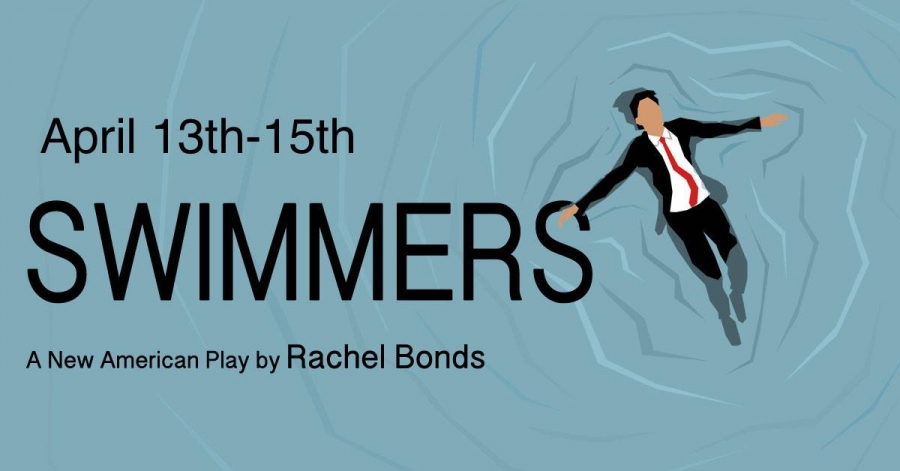
Student-run group shares love of theater in new show
Theater is often visualized thick with grandeur, the large lights and long coattails of Broadway. Such an art isn’t restricted to vast stages, though, and can also be performed under humbler roofs. The work of UC Davis’ Studio 301 is a perfect example of said simpler, yet equally moving theater.
“Swimmers,” Studio 301’s upcoming production, exemplifies a more bare-bones style of theater. It’s an organization looking to create genuine and entertaining shows. Ryan Gerberding, the director of “Swimmers” and a fourth-year theater and dance major, explained Studio 301 as a student club.
“We’re an undergraduate-run theater club,” Gerberding said. “Every show is directed, acted and teched by all undergraduates. Every quarter we either do a professional show, like a published show, like ‘Swimmers’ […] or we do some other sort of performance, like last quarter we did a musical revue.”
Daniel Hollar, a fifth-year political science major and actor in “Swimmers,” mentioned that while Studio 301 may be a theater organization, it brings in a wide swatch of individuals sharing a common hobby.
“It’s a bunch of incredibly talented people from all different majors and walks of life,” Hollar said. “It’s a great club and I enjoy the people.”
Such a small student-run organization faces an issue that parallels many students: funding. A production is not solely actors and a script, but also a set, props and costumes. Members of “Swimmers” hinted at some of the extra work required to see their play into a production.
Caitlyn Sampley, the show’s stage manager and a second-year cinema and digital media and theater and dance double major, joked about holding parts of the set in her car and elaborated on the difficulties of pulling it all together.
“Setwise, I have a rolling desk in the back of my car, because we have no place to store things,” Sampley said. “Typically we’ll thrift. We bought a bunch of chairs off of the SPCA. We’re renting some tables and things. So, everything is very small, very minimal.”
Hollar shone light on similar lengths in regard to costumes.
“We’re trying to make a fat suit,” Hollar said. “The clothes that I’m wearing are obviously way over my size, and we’re going to have a belt right under my chest and then a shirt underneath that belt. Beneath that shirt we’re going to stuff it with like padding and things to kind of make it look as if I have extra fat and skin in certain areas so it doesn’t just look like I shoved a t-shirt underneath my bigger shirt.”
Rachel Bonds’ “Swimmers” is quite new, being produced less than a handful of times. Gerberding discussed some benefits of producing a young play.
“I like working with new pieces because there’s not that whole history that you have to build upon,” Gerberding said. “If you’re working with something classic, if we were doing something like Shakespeare or Arthur Miller, something older, then, you know, you have to take into account that for generations and years and years people have seen these shows and have lots of expectations. But, with something new like [“Swimmers”] people have never heard of it, never seen it before, so you can make it entirely your own.”
Sampley, on the other hand, mentioned some of the downsides.
“It’s kind of a double-edged sword when you do a new play, because typically when you do stuff it is really common to get compared to past productions of things, especially if they’re really well known,” Sampley said. “In a way it’s nice to do a new thing, but at the same time you can learn some things from past productions. You can look at costume designs. You can look at the kind of look people are going for […] It’s really helpful to look for cast photos and production photos, look at the lighting and what the sets looked like and more of the technical side of things.
In regard to the play, Sampley explained the boiled-down essence of it.
“[The audience] is walking into an office space,” Sampley said. “‘Swimmers’ is a normal day in the life at an office, so a lot of dark humor, a lot of intersecting storylines, very vignette style. So, you meet different characters in every scene that may or may not pop up again. […] Just people working together and the shenanigans they get into.”
Hollar elaborated, highlighting the value of the show.
“[The show] is kind of sad, but overall it is happy, because with every scene it airs a specific kind of dilemma for every character,” Hollar said. “It’s uplifting. At the end you think maybe they’ll turn out okay. So although it’s a little bit on the sad side, I think it comes away with a very realistic optimism.”
Opening April 13th, “Swimmers” will be performed by a dedicated group of Aggies who want to see a production grow from start to finish. Studio 301 is designed to gift their own infatuation of theater to the audience from hardwork and dedication. What “Swimmers” will show isn’t the bang of Hollywood, but instead an exhibition of an ensemble who simply love the craft of theater.
Written by: Nicolas Rago — arts@theaggie.org



